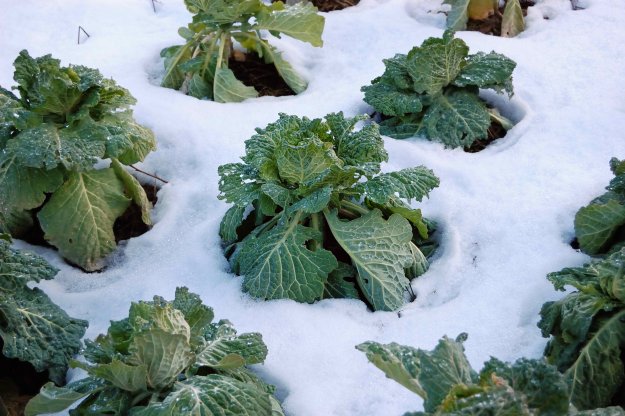Get a headstart on your garden with plastic mulching. Suppress weeds, conserve water, and boost crop production with this wonderful gardening solution.

Plastic Mulching: Save Garden From Weeds & Boost Harvest
Spring comes without fail every year, it is some many of us enjoy and can hardly wait for it to arrive. Spring is the time we get to feel the warmth of the Earth between or fingers, smell the beautiful roses, and do some fruit or vegetable gardening. While the most avid of gardeners simply let Mother Nature take care of and prepare the soil for planting, I have something else. There is a very simple and inexpensive way you can plant your garden outdoors soon after the frost leaves the grounds. This method uses several sheets of transparent plastic that can warm cold soil. It is perfect to use on plants that do not thrive in transplant or indoor environments very well. Using the plastic can allow you to start harvest much earlier than you would have, especially the sweet, yellow corn. Other than corn, it may also be adapted to shelter other vegetables such as squash or tasty sweet potatoes that normally thrive under greenhouse like environments.
Getting Started With Plastic Mulching
This tutorial is specific to a corn-crop, but you can follow the same steps for most any crop.
Start during the fall months by setting up a seedbed that is made up of a foot wide, six or ten inch high ridges of soil that run vertically in an east/west line. You will want to space them in any fashion you would like your corn rows to space out. Alternatively, you can choose to do this in the spring, however, should your garden have poor drainage, you might see yourself in a very messy situation.
Once the frost is out of the ground during the spring season, you can lay a 10×25 foot roll of transparent 4 mil plastic sheeting. It is readily available to purchase at a hardware store. Put the sheet over the planting area while laying it directly on the surface of the soil. Make sure that you anchor the ends of plastic using boards, stones, or any other material to keep the plastic from getting blown away. (Using old croquet hoops or tent pegs are also a great option if you have them.)
When a few days or more pass by, once the earth is beneath the plastic is warm to the touch, move back the cover and plant the corn seeds halfway down the bottom face of each ridge. You can then start to reposition the plastic sheet, secure it, and start the period where you just monitor and wait.
The ridges are vital: they support the plastic until the seedlings grow, it promotes drainage, helps to trap heat, gathers solar energy by day and slowly scatters it inside the plastic during nightfall. It is a technique that ensures even when temperatures during cold times drop to freezing degrees, the plants that remain beneath the plastic will not frost. Regardless of some fluctuations in temperature, the degree inside the greenhouse can get as much as 70 degrees farenheit warmer compared to its outside environment. It works in just about any type of garden, omitting those with a significant slope to the north. As the plant seedlings grow and mature you will need to keep the cover propped open.
Using wooden stakes are a great idea so that the leaves do not get in contact with the plastic and the foliage does not get scorched. Make sure you continue to monitor the level of moisture of the soil carefully. Water it only when you deem it to be needed or air it out gently if it happens to get too damp.
Around the time of usual frost-free periods, start acclimating the little plants at a lower humidity and degree of the outside surroundings. You can do this by opening each side of the plastics for a couple of hours or days. Make sure you repeat the step for much lengthier periods of time during the week. You will then be able to eliminate the plastic sheet once and for all and finally get to store it for another time next year. When a few days go by, thin the corn about seven or eight inches. Make sure you remember to support the roots of the plants. Use the soil from the north side of the slope and pull it in the middle of plants while filling the trench on the opposite side, the south. The rest of the job is a piece of cake you will be able to handle alone. With a little bit of weeding, watering, and some luck, you will be able to look forward to eating some of the sweetest corn you've ever had. You will also be eating the plants months earlier than you'd normally have to wait. Try this method every season so you can have plants year round.
Want to see the benefits of plastic mulching? See it here at Flora-Flow.com:
Are you going to give this technique a try? Let us know below in the comments!

It is a very useful blog and very important information about Plastic Mulch.